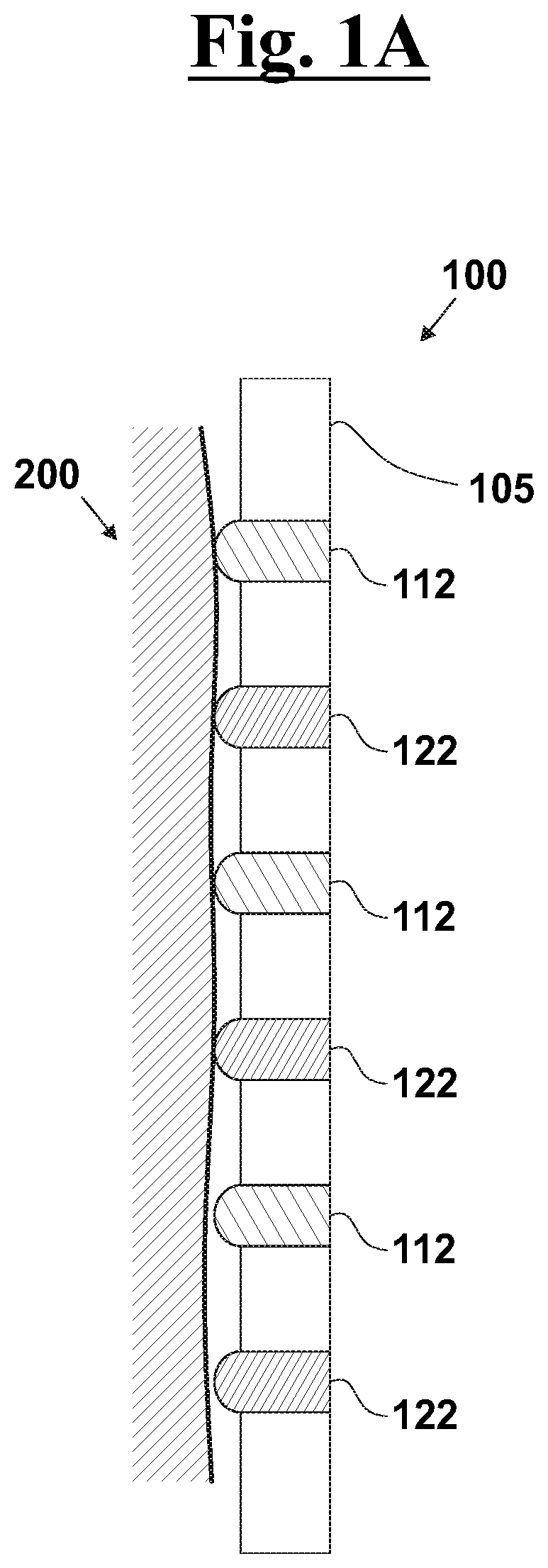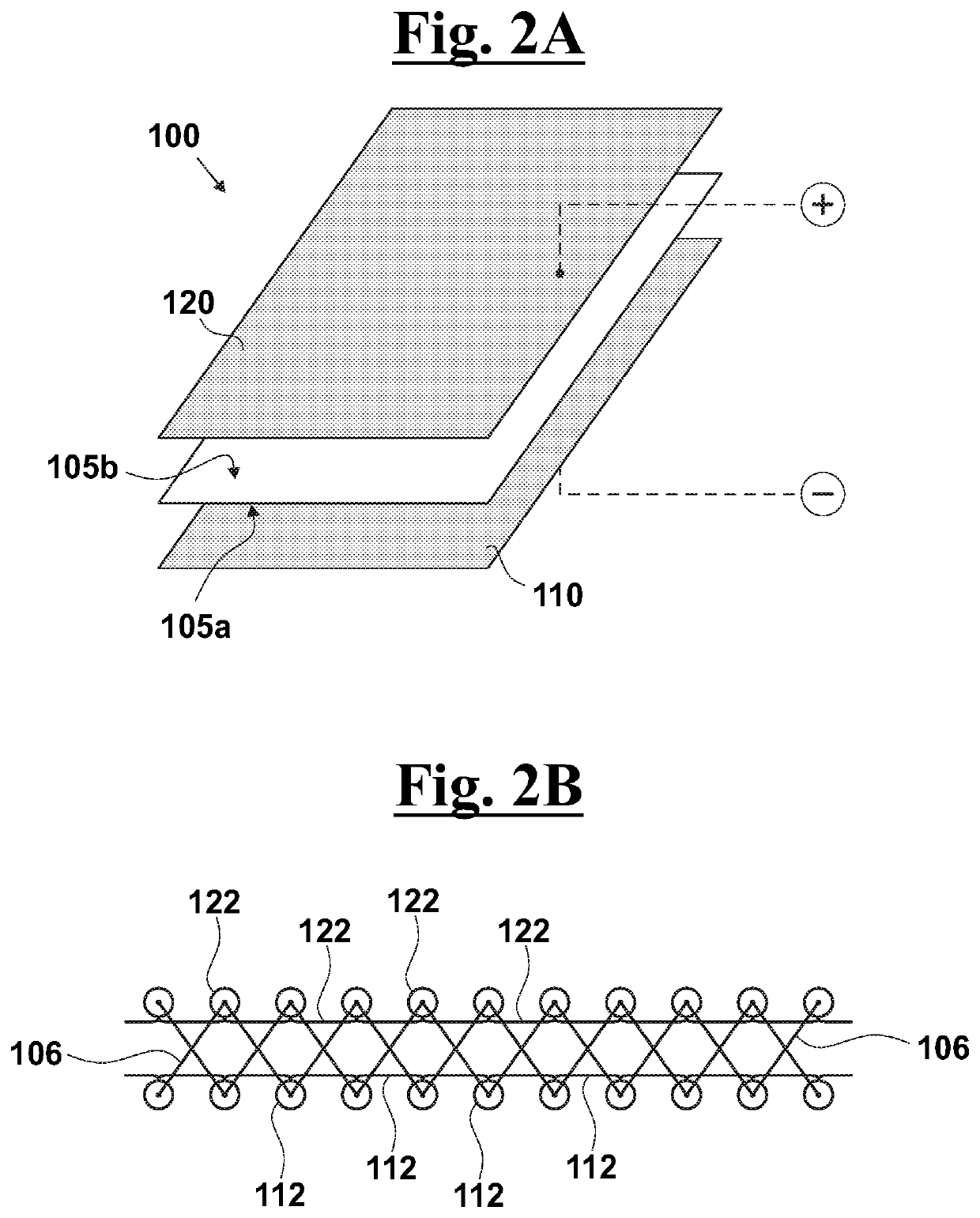Textile sensor for the detection of liquids and temperature, and method of making same
a technology of liquid and temperature detection and textiles, applied in the field of environmental sensors, can solve the problems of loss of physiological fluids, accelerated, and bedsores formed, and achieve the effect of high extensibility and flexibility
- Summary
- Abstract
- Description
- Claims
- Application Information
AI Technical Summary
Benefits of technology
Problems solved by technology
Method used
Image
Examples
Embodiment Construction
[0028]With reference to FIG. 1, in a possible exemplary embodiment, the textile device 100 for detecting liquids, according to the present invention, comprises a matrix fabric 105 obtained by knitting, during which a first non-insulated conductive wire 110 and a second non-insulated conductive wire 120 have been also co-knitted.
[0029]In particular, each non-insulated conductive wires 110,120 comprises a plurality of branches 112,122 arranged in parallel mesh ranks, and knitted in alternate rows, in such a way that the non-insulated conductive wires 110,120 form respective comb structures at least partially interpenetrated and in such a way to homogeneously cover the surface of the textile device 100.
[0030]The non-insulated conductive wires 110,120 are connected to a source of electric energy, in order to create a first electric circuit and to have a potential difference between the non-insulated conductive wires 110,120. Furthermore, there is present, but not shown in the figure for...
PUM
 Login to View More
Login to View More Abstract
Description
Claims
Application Information
 Login to View More
Login to View More - R&D
- Intellectual Property
- Life Sciences
- Materials
- Tech Scout
- Unparalleled Data Quality
- Higher Quality Content
- 60% Fewer Hallucinations
Browse by: Latest US Patents, China's latest patents, Technical Efficacy Thesaurus, Application Domain, Technology Topic, Popular Technical Reports.
© 2025 PatSnap. All rights reserved.Legal|Privacy policy|Modern Slavery Act Transparency Statement|Sitemap|About US| Contact US: help@patsnap.com



